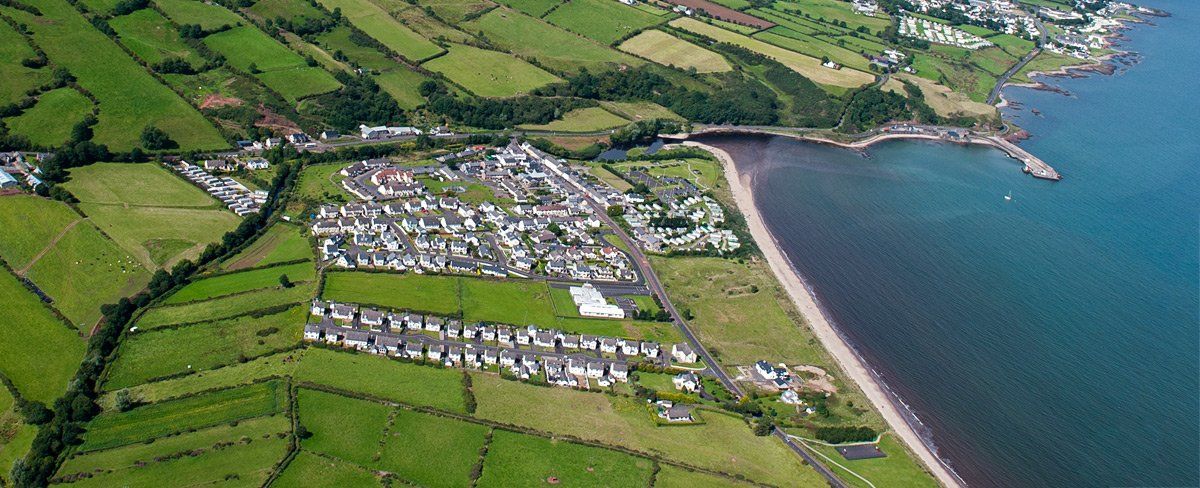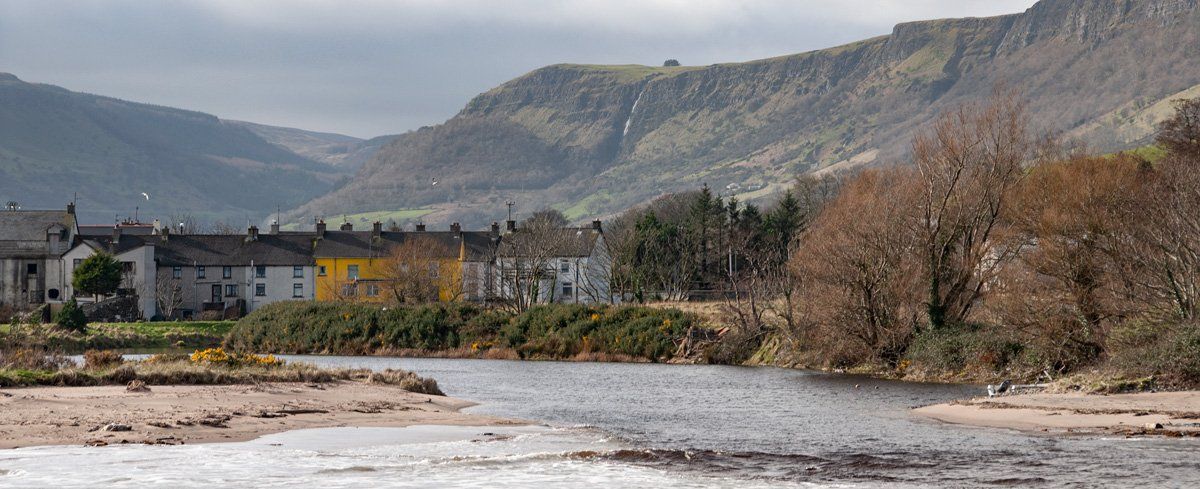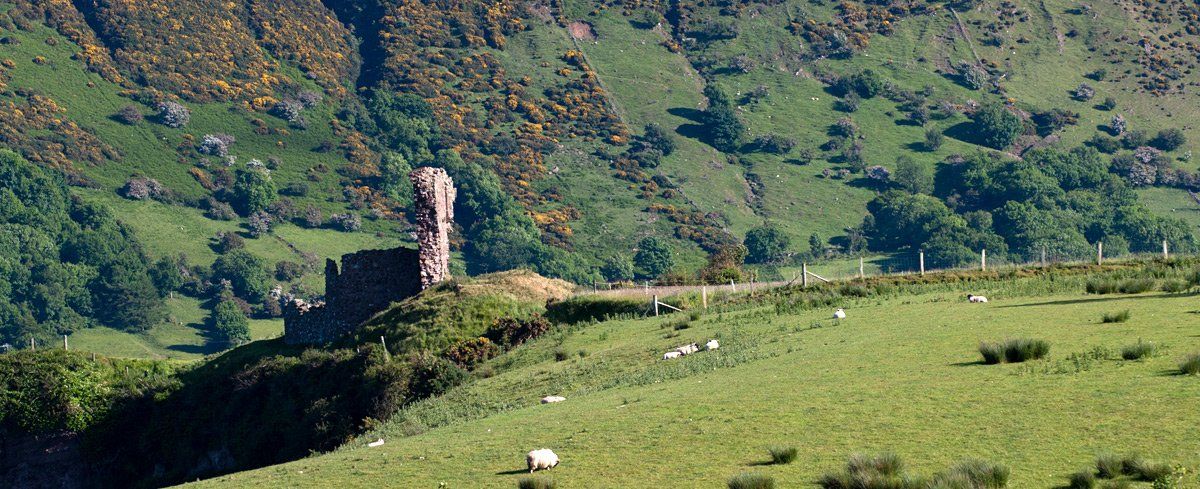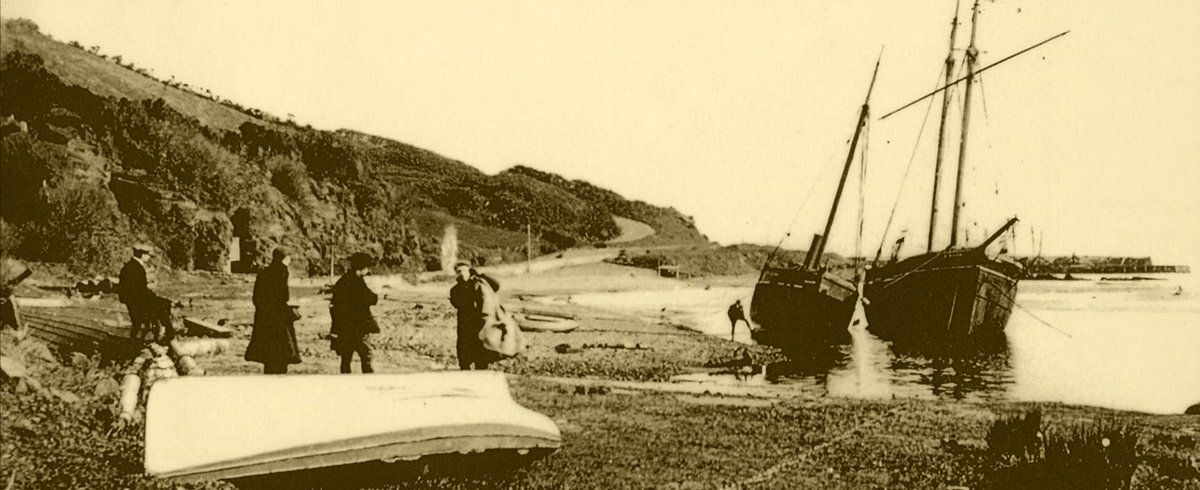Waterfoot History
Waterfoot has seen human habitation since the Neolithic period, the surrounding landscape is scattered with evidence of earlier settlements. On the headland above Red Bay pier is the ruins of Red Bay Castle, in the past this was referred to as McQuillans Fort, a clan who held power locally and were deposed by the MacDonnells. In circa 1314 the Bisset family of Norman descent were granted lands in the glens from King Henry 3rd after they exiled from Scotland, this was probably when the first stone structure was built on the headland to replace a wooden fort. The ruins we see today were restored in the 1500s by the MacDonnell clan who inherited the glens through the marriage of John Tanister MacDonnell (Lord of the Isles) to Margery Bisset's in circa 1390, she was the surviving child of Hugh MacEoin Bisset (Lord of the Glens) and heiress to her father's lands. The strategic castle was destroyed during Oliver Cromwell's military campaign in Ireland (1649-1652).
Seafaring has always played a major part in the history of Waterfoot, before the 1800s the glens were difficult to access and it was easier to trade across the stretch of water to Scotland. The close proximity of Argyll and the similarities that exist in language, music and traditions, reflect this. The first landing stage at Waterfoot know as the 'Black Rock' was near the mouth of the river, ships would come in on the tide, unload, then leave on the full tide. I found references of ships arriving here from America and Canada in the 1830s. The 'Black Rock' was blasted away circa 1840s and used in the construction of Red Bay Pier which then served the area for the import and export of goods, and travel . A car ferry also operated from here in the 1970s to Cambeltown on the Mull of Kintyre.
Along with seafaring traditions on the surface there was other pioneering work being done under the water by the Murray brothers, Alex, John and Archie who were regarded as the best divers in Ulster. They began diving in the 1860s using the early bell style helmet with pipes to the surface for air and were responsible for salvaging numerous shipwrecks around the north coast including the Taymouth Castle, Irishman, Clementine, Eslington Firth, Lake Champlain and Daybreak. During the First World War they were called upon to salvage several war wrecks and also assist in the building of harbour's which included Carnlough, Raghery (Rathlin) and Tramore in County Waterford.
The proximity of Scotland and the network of bays and islands around the north coast were a natural environment for smuggling which was a popular and lucrative activity. Government taxes and duties imposed on goods resulted in a flourishing illegal trade in commodities like linen, spirit (whiskey), skins, tea, wool and silk. Campbeltown customs officers logged dozens of interceptions of boats trying to land goods on Sanda Island (just off the Scottish coast) a short sail from Red Bay. An incident in 1772 records H.M.S. Lurcher being engaged in a battle with two armed cutters off the north coast which belonged to smugglers.
Several smugglers were killed, including ‘Jack the Batchelor,’ who is buried in Glenarm. The Brackenridge family, who lived where the present-day Boat Club is at Cushendall were notorious and operated a widespread smuggling business during the 1780s. Goods would be transferred from larger ships offshore then distributed to various pre-arranged locations along the coast. Waterfoot can also claim two world famous maritime connection, Captain Charles McDonnell a seafarer and William Coulter a marine artist.





